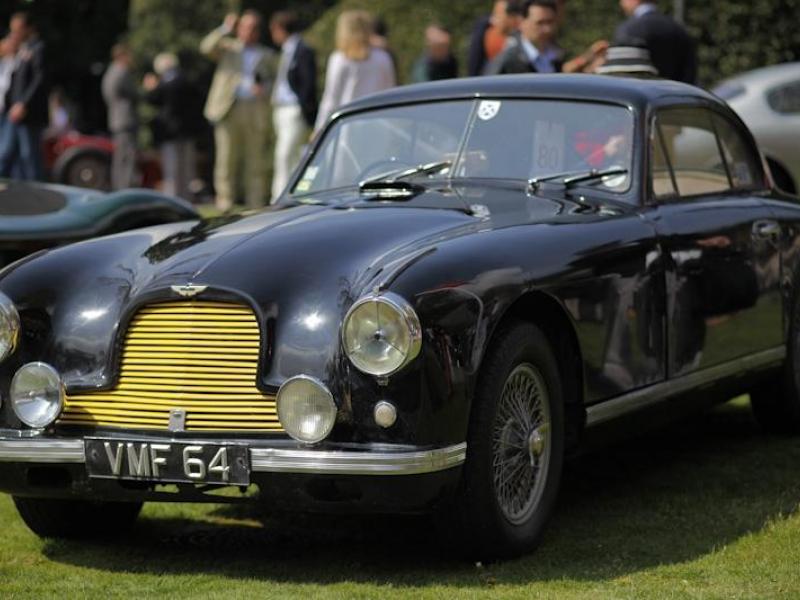1950 Aston Martin DB2 Saloon

The descriptions of the Classic Cars in the Directory were partly generated or supplemented with the help of artificial intelligence (AI). The content may occasionally not always be entirely accurate or factually correct despite careful checking.
The Aston Martin DB2 Saloon, released in 1950, was an icon of British automotive engineering. This sleek and stylish vehicle represented a significant step forward in automotive design, with advanced features and cutting-edge technology that set it apart from its contemporaries.
Under the hood, the DB2 was powered by a 2.6-liter straight-six engine. This engine was designed to deliver power and performance, with features such as a twin overhead camshaft, high compression ratio, and dual SU carburetors helping to deliver maximum horsepower and torque. The engine was capable of delivering 120 horsepower at 5,000 rpm, which was impressive for the era.
The chassis of the DB2 was equally advanced, with a tubular steel frame that was both lightweight and strong. This chassis design allowed for a more rigid vehicle structure, which in turn improved handling and precision in driving. The DB2 was also equipped with independent front suspension, which further enhanced its performance and handling capabilities.
The body of the DB2 was custom-designed by Italian coachbuilder Carrozzeria Touring, and it featured a beautiful, aerodynamic shape that was both stylish and functional. The body was constructed from lightweight aluminum panels, which helped to keep the weight of the vehicle down and improve its overall performance.
Inside the DB2, there was a spacious and comfortable cabin that was designed with both driver and passenger in mind. The seating was upholstered in high-quality leather, and the dashboard was fitted with a range of advanced features, including a large-speedometer and tachometer, gauges for oil pressure and water temperature, and controls for the heating and ventilation systems.
Overall, the Aston Martin DB2 Saloon was a technological marvel of its time, and it set a new standard for automotive design and engineering. Its advanced features and cutting-edge technology made it one of the most sought-after vehicles on the market, and it remains a classic example of British automotive engineering to this day.
Milestones
- Introduced in 1950 as the successor to the Aston Martin 2-Litre Sports - Built on a custom tube frame chassis with independent front suspension and a live rear axle - Powered by a 2.6-liter Lagonda inline-six engine with dual overhead camshafts and twin SU carburetors, producing 105 horsepower - Available in either a two-door coupe or four-door saloon body style - Featured a lightweight aluminum body designed by Frank Feeley, with classic styling touches like an eggcrate grille, flared fenders, and a long hood - Offered with options like wire-spoke wheels, leather upholstery, and a Motorola radio - Achieved success on the racing circuit, including a 1st place finish in the 1951 24 Hours of Le Mans in the hands of Peter Walker and Peter Whitehead - Production ran from 1950 to 1953, with a total of 411 units built - Has since become a highly sought-after classic car, with examples fetching high prices at auction.Technical
- Engine: 2.6L Inline-6 DOHC - Power: 105 hp - Transmission: 4-speed manual - Top Speed: 109 mph - 0-60 mph: 12.2 seconds - Wheelbase: 99 inches - Length: 175 inches - Width: 66.5 inches - Height: 58 inches - Curb weight: 2,764 pounds - Suspension: Front Coil springs, rear Live Axle, semi-elliptic springs - Brakes: Hydraulic drums (front and rear) - Fuel Tank Capacity: 18 gallons.